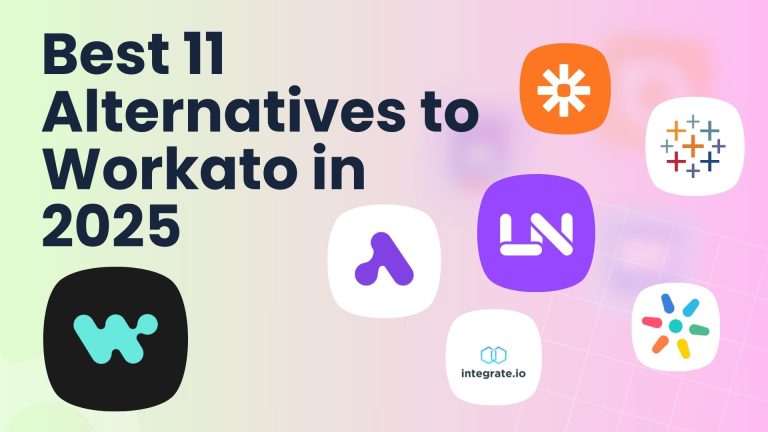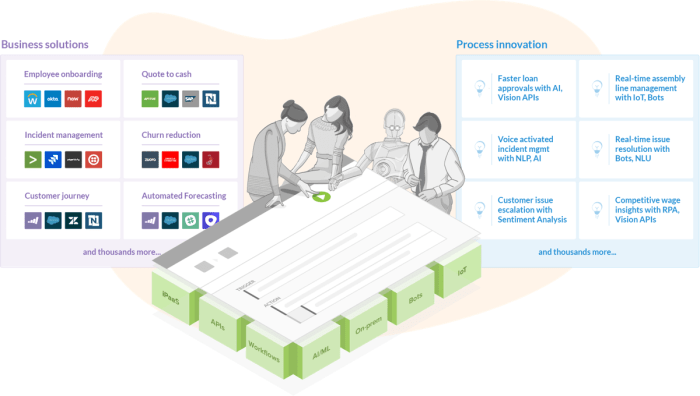Workato Salesforce Integration A Deep Dive
Workato Salesforce integration empowers businesses to seamlessly connect their Salesforce data with other systems. This integration offers significant advantages, streamlining workflows and unlocking valuable insights. From streamlining data flows to enhancing operational efficiency, understanding the intricacies of this integration is key for success.
This comprehensive guide explores the various aspects of Workato Salesforce integration, covering everything from foundational concepts to advanced implementation strategies. We’ll delve into key considerations like data mapping, security protocols, and common troubleshooting scenarios. Furthermore, a practical implementation process will be provided, along with detailed examples and actionable insights. This approach ensures a thorough understanding of this powerful integration technique.
Introduction to Workato and Salesforce Integration
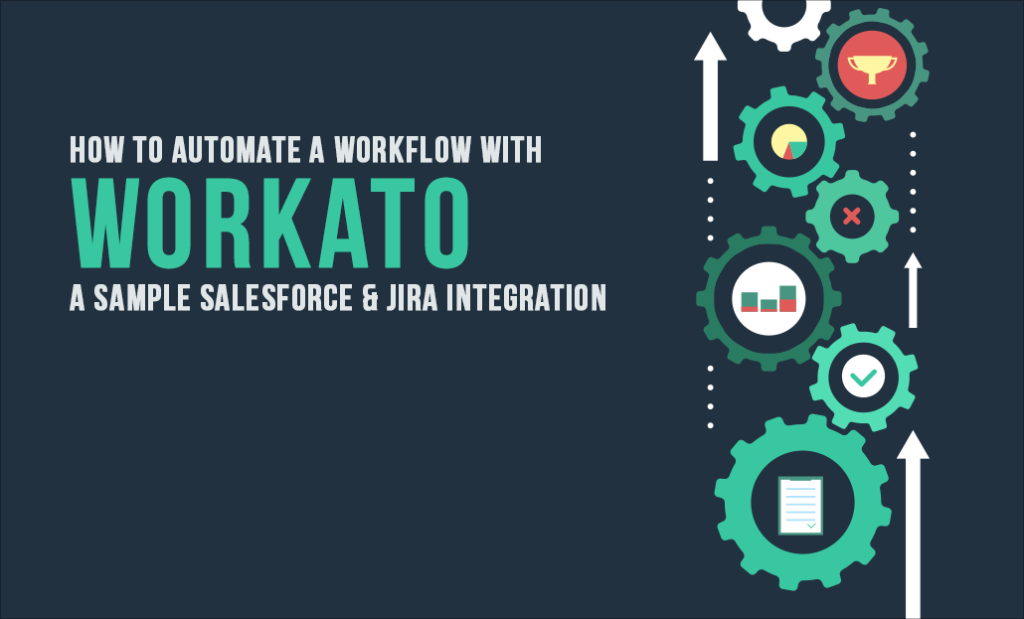
Workato is a powerful integration platform that simplifies the process of connecting Salesforce to other systems. It offers a robust and flexible solution for automating data flows, ensuring seamless information exchange between Salesforce and various applications. This approach allows businesses to leverage the full potential of Salesforce data while optimizing workflows and improving operational efficiency.
Workato’s intuitive interface and comprehensive capabilities make it an attractive choice for businesses seeking to integrate Salesforce with other critical systems. This ease of use, coupled with its advanced features, makes Workato a valuable tool for streamlining data management and enhancing overall business performance.
Workato’s Capabilities for Salesforce Integration
Workato provides a wide range of capabilities specifically designed for integrating with Salesforce. These capabilities enable the automated transfer of data between Salesforce and other applications, supporting a variety of data types and formats. This includes the ability to map fields, transform data, and manage complex workflows.
Benefits of Using Workato for Salesforce Integrations
Workato offers several key benefits for businesses implementing Salesforce integrations. These benefits include improved data accuracy and consistency across systems. Reduced manual effort and errors are significant advantages, leading to increased efficiency and productivity. Moreover, Workato enables faster data processing and facilitates real-time updates, enabling more responsive business operations.
Common Use Cases for Workato in Salesforce Integrations
Workato is applicable in numerous scenarios for Salesforce integration. One common use case is automating data transfers from legacy systems to Salesforce. This allows for seamless migration of critical information, ensuring business continuity and preventing data loss. Furthermore, Workato facilitates the integration of customer data from various sources into Salesforce, providing a comprehensive view of customer interactions.
Examples of Streamlined Data Flows, Workato Salesforce integration
Workato streamlines data flows between different systems and Salesforce in several ways. For instance, it can automatically extract order data from an e-commerce platform and populate the corresponding Salesforce order records. This automated process ensures data accuracy and consistency. Similarly, Workato can integrate marketing campaign data from a marketing automation tool into Salesforce, providing a complete picture of customer engagement and campaign performance. This streamlined flow improves data visibility and enhances marketing decision-making. Another example is integrating inventory data from a warehouse management system into Salesforce. This allows for real-time visibility of product availability and accurate order fulfillment.
Key Considerations for Integration: Workato Salesforce Integration
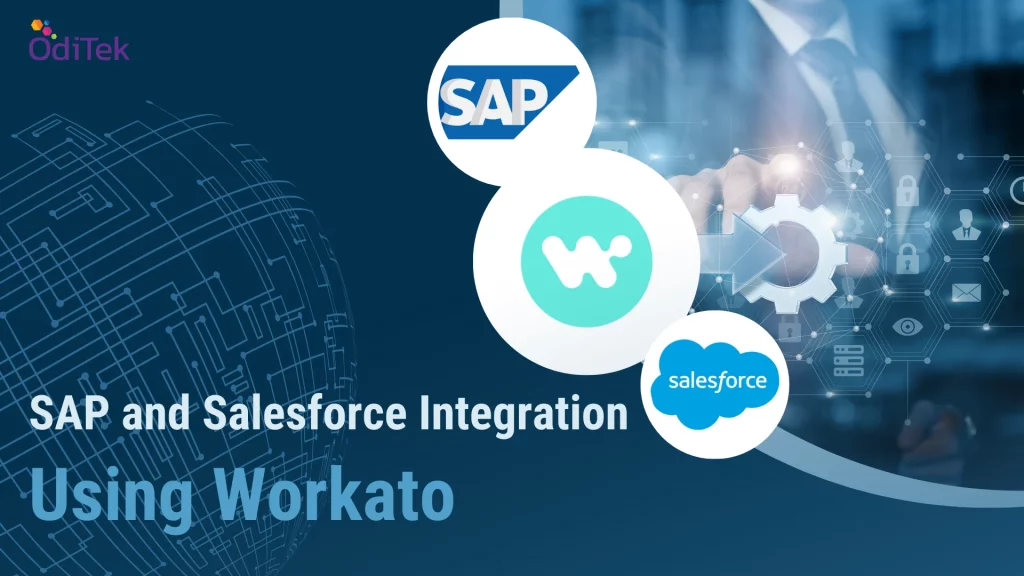
Planning a Workato-Salesforce integration requires careful consideration of various factors. Successful implementations hinge on understanding the specific needs of the integration, from data handling to security protocols. Thorough preparation minimizes potential issues and ensures a smooth transition.
A successful Workato-Salesforce integration project is more than just connecting the two platforms. It necessitates a deep understanding of the data flowing between them and how that data will be used. Proper planning and execution are crucial to avoid complications and ensure the integration meets the organization’s business objectives.
Data Mapping and Transformation
Accurate data mapping is essential for a successful Workato-Salesforce integration. This involves defining the structure and relationships between data fields in both systems. Correctly mapping fields ensures that data is transferred accurately and consistently, preventing errors and ensuring that data integrity is maintained. Transformations are often necessary to adjust data formats or values to match Salesforce’s requirements. For example, data from a legacy system might require formatting changes or calculations to be compatible with Salesforce’s data structures. The process needs meticulous attention to detail to avoid inconsistencies that could impact downstream processes.
Data Formats Handled by Workato
Workato supports various data formats, enabling seamless integration with diverse sources. These formats include but are not limited to JSON, XML, CSV, and flat files. This versatility allows Workato to handle data from a wide range of systems, making it a powerful tool for integration projects. Workato’s robust handling of various data formats ensures that the data is transformed accurately and efficiently to match Salesforce’s specific needs. This adaptability is critical for integrating with diverse systems without losing data integrity.
Security Measures for Data Transfer
Ensuring secure data transfer between Workato and Salesforce is paramount. Robust security measures are crucial for protecting sensitive information. Implementations should include encryption during data transmission and storage. Authorization and authentication protocols should be employed to restrict access to sensitive data. Regular security audits and vulnerability assessments are critical to maintain data integrity and compliance with industry standards and regulations. Using Workato’s secure connection features and Salesforce’s robust security protocols is vital for safeguarding sensitive data.
Common Data Sources for Workato-Salesforce Integration
| Data Source | Description | Workato Integration Method | Salesforce Integration Point |
|---|---|---|---|
| Customer Relationship Management (CRM) Systems | Systems used for managing customer interactions. | Custom connectors or pre-built connectors | Sales Cloud, Service Cloud |
| Marketing Automation Tools | Tools for managing marketing campaigns and customer engagement. | Custom connectors or pre-built connectors | Marketing Cloud, Sales Cloud |
| E-commerce Platforms | Systems for online sales and order management. | Custom connectors or pre-built connectors | Commerce Cloud, Sales Cloud |
| Accounting Software | Systems for managing financial transactions. | Custom connectors or pre-built connectors | Financial Cloud, Sales Cloud |
These common data sources frequently integrate with Workato and Salesforce, streamlining workflows and enabling businesses to access comprehensive data insights. Choosing the appropriate integration methods and Salesforce integration points depends on the specific requirements of each data source and the business objectives.
Implementation Strategies

Source: mktgcdn.com
Successfully integrating Workato with Salesforce necessitates a well-defined implementation strategy. This involves careful planning, meticulous configuration, and a thorough understanding of data flows and transformations. This section provides a step-by-step process for establishing a robust and efficient integration, highlighting key aspects of data management and automation.
A methodical approach to setting up a Workato-Salesforce integration is crucial for achieving a seamless transition and ensuring optimal performance. This approach encompasses a clear definition of data sources, target destinations, and desired outcomes. This structured approach fosters a consistent integration process.
Step-by-Step Integration Process
A systematic approach to Workato-Salesforce integration involves several key steps. Each step contributes to the overall success of the integration project.
- Initial Assessment and Planning: Define the scope of the integration, identifying specific Salesforce objects and Workato actions needed. Document the desired data flow, mapping Salesforce fields to Workato variables. Establish clear success metrics and timelines for the integration process.
- Workato Setup: Create a new Workato account and project. Configure the necessary Workato connectors for interacting with Salesforce. Select appropriate authentication methods to securely connect to Salesforce.
- Data Mapping and Transformations: Map data fields between Salesforce and Workato. Apply transformations, if required, to ensure data compatibility between systems. Validate data mappings and transformations to prevent errors in the integration.
- Testing and Validation: Implement testing procedures to verify data accuracy and integrity. Employ unit tests to validate individual components and integration tests to ensure the complete flow operates as expected. Thoroughly test edge cases and scenarios to uncover potential issues.
- Deployment and Monitoring: Deploy the finalized integration to production. Monitor the integration for performance and identify potential issues proactively. Establish alerts for critical errors or performance bottlenecks.
Configuring Data Flows and Transformations
Efficient data flow configuration is essential for a successful Workato-Salesforce integration. This process involves specifying the order of operations and data transformations required to move data between systems.
- Data Flow Design: Create a visual representation of the data flow, depicting the source (Salesforce), destination (Workato), and any intermediate transformations. Ensure the flow aligns with business requirements and data integrity needs.
- Transformation Logic: Utilize Workato’s transformation capabilities to modify data as needed. Apply functions for data cleaning, formatting, and conversion to ensure data quality and consistency.
- Error Handling: Implement robust error-handling mechanisms to address potential issues during data transfer. Configure error logging and reporting to identify and resolve problems effectively.
Utilizing Workato Connectors for Salesforce
Workato offers a comprehensive set of connectors for interacting with Salesforce objects. This allows for seamless data exchange and manipulation between the two platforms.
- Selecting Appropriate Connectors: Choose the right Workato connectors for specific Salesforce objects, ensuring compatibility and efficiency. Consider factors such as data volume, frequency of updates, and required actions.
- Authentication and Authorization: Securely connect to Salesforce using the appropriate authentication methods provided by Workato. Implement robust security measures to protect sensitive data.
- Example: A Workato flow can retrieve customer data from Salesforce, apply transformations to format the data for a report, and then push the report data to a CSV file stored in a cloud storage service.
Workato’s Automation Features
Workato provides powerful automation capabilities, enabling businesses to streamline workflows and automate repetitive tasks.
- Triggers and Actions: Leverage Workato’s triggers and actions to automate various tasks, including data updates, notifications, and report generation. This ensures consistent execution of predefined tasks.
- Workflow Design: Create workflows that orchestrate tasks across different Salesforce objects and systems. Design flows to manage data updates, automate processes, and streamline business operations.
- Scheduling: Schedule Workato flows to run at specific times or intervals. This ensures data synchronization and automates recurring tasks.
Creating Custom Workato Automation Workflows
Custom Workato workflows can be designed to address specific business needs, enabling tailored automations for Salesforce integrations.
- Defining Business Needs: Identify specific tasks or processes that can be automated using Workato. Document the required inputs, outputs, and steps to achieve the desired outcome.
- Workflow Design: Create a detailed design for the custom workflow, specifying the triggers, actions, and transformations. Use visual tools within Workato to map out the workflow logic and data flow.
- Testing and Debugging: Test the workflow extensively to ensure accurate data handling and execution. Identify and resolve any issues to guarantee a robust and reliable workflow.
Troubleshooting and Optimization
Troubleshooting and optimizing Workato-Salesforce integrations is crucial for ensuring reliable data flow and optimal performance. Addressing potential issues promptly minimizes downtime and prevents data discrepancies. This section delves into common problems, their solutions, and strategies for performance enhancement and ongoing maintenance.
Common Integration Issues and Solutions
Effective troubleshooting requires a methodical approach. Identifying the root cause of problems is key to finding the right solution. The following table lists Artikels’ common integration issues and their respective solutions:
| Issue | Description | Solution |
|---|---|---|
| Data Synchronization Errors | Data might not be transferring accurately or completely between Workato and Salesforce. This can stem from various reasons, including misconfigured mappings, issues with data formats, or transient network problems. | Thoroughly review the data mapping in Workato to ensure accurate data transformation. Verify that the data types and formats match between the systems. Check Salesforce’s API limits and ensure the Workato connection is stable. Employ debugging tools within Workato to inspect the data flow at various stages. |
| API Rate Limits | Exceeding Salesforce’s API rate limits can result in temporary or permanent service disruptions. This often occurs when large volumes of data are processed or when integrations run frequently. | Implement strategies to batch data processing or schedule integrations to avoid hitting the limits. Leverage Workato’s features to control the frequency of API calls. Consider using Salesforce’s bulk API for high-volume data transfers. Optimize the integration logic to minimize unnecessary API calls. |
| Integration Performance Bottlenecks | Slow or delayed data transfers can indicate bottlenecks in the integration process. This could be caused by complex data transformations, slow network connections, or insufficient processing power. | Analyze the integration flow to pinpoint slow-performing steps. Simplify data transformations to reduce processing time. Ensure sufficient processing resources are allocated to the Workato instance. Consider optimizing database queries within Salesforce, especially if Workato is frequently interacting with them. Implement caching strategies where appropriate to reduce redundant data retrieval. |
Optimizing Data Flows for Performance
Optimizing data flows in Workato-Salesforce integrations is a continuous process. Efficiency improvements translate directly to faster data transfers and reduced latency. Several strategies can enhance performance:
- Batch Processing: Instead of processing each record individually, batch records together to reduce the number of API calls and improve overall efficiency.
- Data Caching: Cache frequently accessed data to minimize redundant database queries and improve response times. This can significantly reduce the load on Salesforce’s API.
- Asynchronous Operations: Use asynchronous operations to perform time-consuming tasks without blocking the main integration thread. This keeps the integration responsive and avoids delays.
- Monitoring and Logging: Track integration performance metrics and log errors to quickly identify and resolve issues. This is critical for maintaining the health and stability of the integration.
Monitoring and Tracking Integration Performance Metrics
Effective monitoring is essential for maintaining the reliability of Workato-Salesforce integrations. Tracking performance metrics provides insights into potential bottlenecks and areas needing improvement.
- API Call Counts: Monitor the frequency of API calls to Salesforce to ensure they are within acceptable limits. Excessive calls can lead to rate-limiting issues.
- Data Transfer Times: Track the time it takes to transfer data between Workato and Salesforce. Identify slowdowns and their causes to optimize the integration.
- Error Rates: Monitor error rates to detect and resolve integration problems early. High error rates indicate issues that need immediate attention.
- Integration Logs: Review logs to identify patterns and potential issues in the data flow. This aids in diagnosing the source of errors.
Best Practices for Maintaining and Updating Integrations
Consistent maintenance and updates ensure that integrations remain functional and perform optimally.
- Regular Testing: Conduct regular testing to verify that integrations continue to function as expected. This includes testing for both new and existing features.
- Version Control: Implement version control for Workato workflows to track changes and revert to previous versions if necessary.
- Documentation: Maintain clear documentation for the integration process, including mapping details, error handling procedures, and troubleshooting steps. This aids in future maintenance.
- Security Best Practices: Implement security measures to protect sensitive data during transfer. This is paramount in preventing unauthorized access.
Conclusion
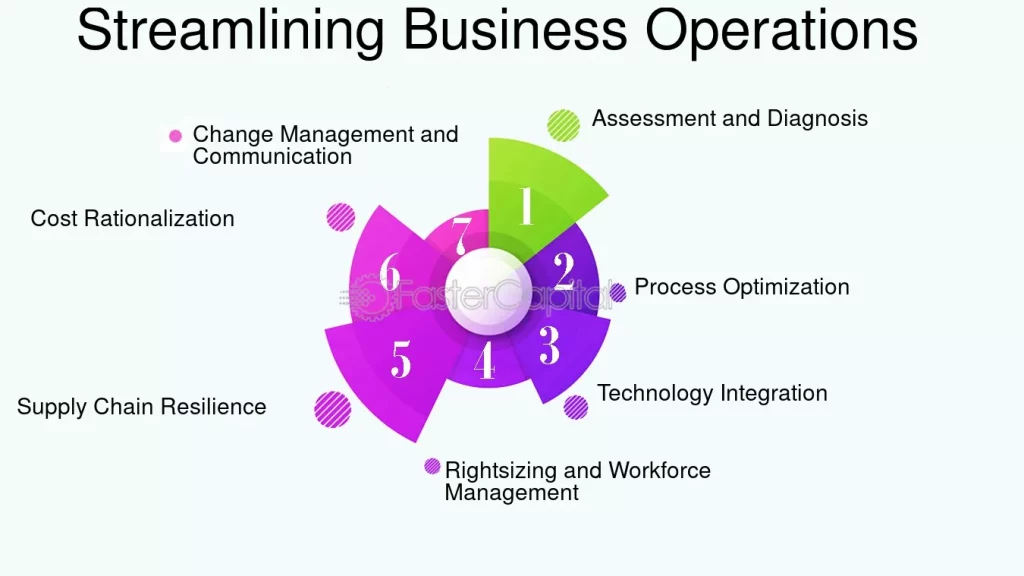
In conclusion, Workato Salesforce integration provides a powerful avenue for enhancing business processes and maximizing data utilization. By understanding the key considerations, implementation strategies, and potential troubleshooting steps, organizations can effectively leverage this integration to improve efficiency, gain valuable insights, and ultimately drive growth. The practical examples and detailed explanations within this guide equip you with the knowledge to confidently navigate this integration and unlock its full potential.

